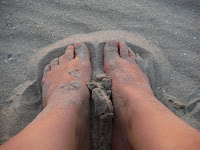Dark Matter and Other Wonders of the Universe

Open Letter from Vera Rubin: Dark Matter and Other Wonders of the Universe
(in which the poet imagines to be the astronomer Vera Rubin)*
As a child, I wondered how the moon knew to follow us home.
I wondered if bright burning comets visited other worlds like ours.
There were nights, when I was certain
The tolling of a distant galactic clock woke me—
The stars outside my window had spun across the sky.
In truth, everything: our planet, the window, and I had moved.
Yet I perceived myself as still, and safe in bed.
These thoughts made me dizzy with desire
To see it all spinning, and spinning
From a distant place outside our galaxy.
To watch the heavens is to be an astronomer.
Copernicus looked with naked eye, and
Galileo proved with telescopic observations,
The Earth orbits the Sun, not the other way around.
Johannes Kepler observed the planets
Farther from the sun orbit slower
Than planets closer in, but why?
Sir Isaac Newton later explained Gravity—
A force proportional to an object’s mass.
Large pulls small and holds it fast.
Hence, the apple falls to the Earth.
And, the Earth stays tethered to the Sun.
Newton observed the pull of Gravity decreases
With a planet’s distance from the Sun.
Thus, close, quick-silver Mercury orbits fastest.
While Venus and Earth outpace Mars in its path
Around the sun; Neptune is the slowest.
A mass at the center of our galaxy,
Even bigger than our sun, pulls us,
And our neighbor stars in a spiral, cosmic dance.
As I grew up, the desire to see
The dance firsthand still filled my dreams.
I trained my telescope on other galaxies.
Their centers were brilliant, full of stars
While the outer discs and spiral arms
Held a mere smattering of lights.
Less light, less mass, and hence
Less pull from Gravity. Like Neptune,
These outer stars should orbit slower
Than those stars closer in.
Theories, however, must be verified so,
We measured the stars’ velocities.
Splitting starlight with a spectrograph
We made photographs of the cosmic dance.
Long days and nights of calculations followed.
But the final numbers made no sense.
Had I made some grave mistake?
For the stars on the galaxy’s edge appeared
To speed through space at an equal rate
As those stars closer in!
Was there a mass that we couldn’t see,
Generating the force of Gravity, and
Pulling stars to such outlandish speeds?
We checked the math, took more photographs.
What we observed was evidence of a lightless mass,
A mystery that other astronomers had theorized and named.
Dark matter, invisible to our telescopes, and yet,
We observed its effect on the motions of the universe.
This mysterious matter may also explain
The insatiable appetite of galaxies
As they clump, and bump, and eat each other up.
Dark matter may prove to be the galactic demon**
Setting some stars to orbit in opposite directions.
Enough dark matter may even tip the scale
And halt the expansion of the universe
From the initial Bang of its creation.
The galactic clock keeps ticking,
And although my eyes are dimming,
I search the stars for answers of where we’ve been,
And wonder where our planet,
May travel to one day.
Future astronomers—observers of the past
To you I pass the proverbial baton.
Find a place devoid of lights. Drink in the view.
The wonders of the cosmic dance await.
I promise all you need to do—is look.
------------------------------------------------------------------------------------------------------------------
* in the same manner of Siv Cedering about Caroline Herschel (Letters from the Floating World, 1984 University of Pittsburgh Press)
** Maxwell’s demon – an imaginary creature, used by Donald Lynden-Bell to reverse the spin of half of the stars in a galaxy. He proved that theoretically a galaxy would remain stable, however, their natural formation was assumed impossible. Vera Rubin found them—just by looking.
Picture Book about Vera Rubin Stuff Between the Stars: https://www.abramsbooks.com/product/stuff-between-the-stars_9781419736261/
Rubin Observatory: https://www.lsst.org/



Comments
Post a Comment